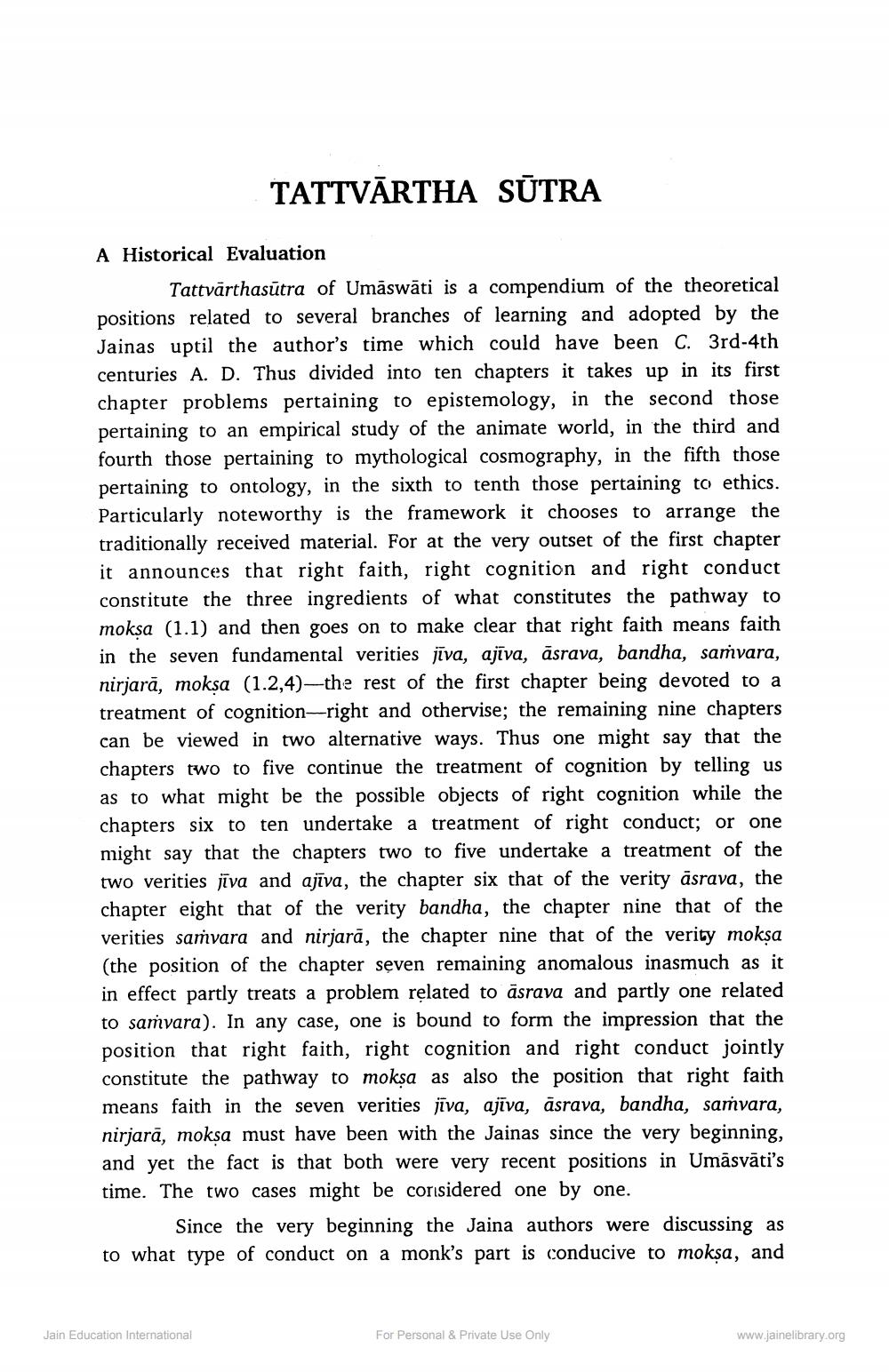Book Title: Tattvartha Sutra Author(s): Sukhlal Sanghavi, K K Dixit Publisher: L D Indology Ahmedabad View full book textPage 8
________________ TATTVĀRTHA SŪTRA A Historical Evaluation Tattvärthasūtra of Umaswati is a compendium of the theoretical positions related to several branches of learning and adopted by the Jainas uptil the author's time which could have been C. 3rd-4th centuries A. D. Thus divided into ten chapters it takes up in its first chapter problems pertaining to epistemology, in the second those pertaining to an empirical study of the animate world, in the third and fourth those pertaining to mythological cosmography, in the fifth those pertaining to ontology, in the sixth to tenth those pertaining to ethics. Particularly noteworthy is the framework it chooses to arrange the traditionally received material. For at the very outset of the first chapter it announces that right faith, right cognition and right conduct constitute the three ingredients of what constitutes the pathway to mokṣa (1.1) and then goes on to make clear that right faith means faith in the seven fundamental verities jīva, ajīva, āsrava, bandha, samvara, nirjară, mokṣa (1.2,4)-the rest of the first chapter being devoted to a treatment of cognition-right and othervise; the remaining nine chapters can be viewed in two alternative ways. Thus one might say that the chapters two to five continue the treatment of cognition by telling us as to what might be the possible objects of right cognition while the chapters six to ten undertake a treatment of right conduct; or one might say that the chapters two to five undertake a treatment of the two verities jīva and ajīva, the chapter six that of the verity asrava, the chapter eight that of the verity bandha, the chapter nine that of the verities samvara and nirjarā, the chapter nine that of the verity mokṣa (the position of the chapter seven remaining anomalous inasmuch as it in effect partly treats a problem related to äsrava and partly one related to samvara). In any case, one is bound to form the impression that the position that right faith, right cognition and right conduct jointly constitute the pathway to mokṣa as also the position that right faith means faith in the seven verities jiva, ajīva, asrava, bandha, samvara, nirjarā, mokṣa must have been with the Jainas since the very beginning, and yet the fact is that both were very recent positions in Umāsvāti's time. The two cases might be considered one by one. Since the very beginning the Jaina authors were discussing as to what type of conduct on a monk's part is conducive to mokṣa, and Jain Education International For Personal & Private Use Only www.jainelibrary.orgPage Navigation
1 ... 6 7 8 9 10 11 12 13 14 15 16 17 18 19 20 21 22 23 24 25 26 27 28 29 30 31 32 33 34 35 36 37 38 39 40 41 42 43 44 45 46 47 48 49 50 51 52 53 54 55 56 57 58 59 60 61 62 63 64 65 66 67 68 69 70 71 72 73 74 75 76 77 78 79 80 81 82 ... 596
